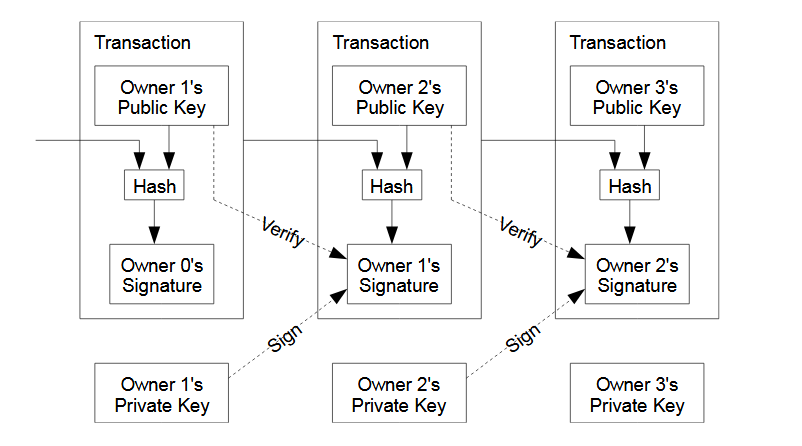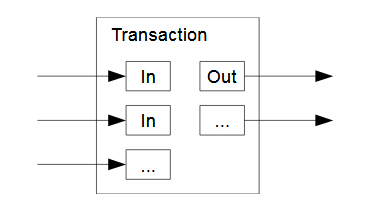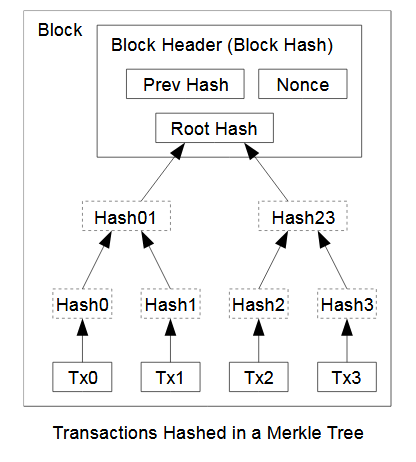Difference between revisions of "Main Page"
David Watson (talk | contribs) |
David Watson (talk | contribs) |
||
| Line 19: | Line 19: | ||
* '''Micropayments''' are now possible on Bitcoin, because transaction costs are exceptionally low. This has huge potential. Authors such as George Gilder argue that a revolution is coming and that '' 'the crude imperatives of “free” [in online services] will give way to the calibrated voluntary exchanges of free markets and micropayments.' '' (see [https://townhall.com/columnists/georgegilder/2018/07/17/exclusive-10-laws-of-the-cryptocosm-n2501167 The Fall of Big Data and the Rise of the Blockchain Economy] Chapter 5, Gateway Editions ISBN 1621575764, July 2018) | * '''Micropayments''' are now possible on Bitcoin, because transaction costs are exceptionally low. This has huge potential. Authors such as George Gilder argue that a revolution is coming and that '' 'the crude imperatives of “free” [in online services] will give way to the calibrated voluntary exchanges of free markets and micropayments.' '' (see [https://townhall.com/columnists/georgegilder/2018/07/17/exclusive-10-laws-of-the-cryptocosm-n2501167 The Fall of Big Data and the Rise of the Blockchain Economy] Chapter 5, Gateway Editions ISBN 1621575764, July 2018) | ||
| − | * '''Increased capacity''' for transaction handling is also spurring growth - even before the [[Genesis upgrade]] the network could comfortably handle [https://www.prnewswire.com/news-releases/bitcoin-svs-genesis-hard-fork-300989579.html 1000 transactions per second]. This capacity continues to increase. In a [https://papers.ssrn.com/sol3/papers.cfm?abstract_id=3065857 2017 paper], Craig Wright wrote that ''"Bitcoin has the potential to replace all existing payment systems to become the world’s primary infrastructure for commerce over the internet."''. See also [[Capacity Metrics]] and [https://coingeek.com/nchains-road-to-genesis-and-unlimited-bsv-scaling-at-coingeek-seoul this article on scaling]. | + | * '''Increased capacity''' for transaction handling is also spurring growth - even before the [[Genesis upgrade]] the network could comfortably handle [https://www.prnewswire.com/news-releases/bitcoin-svs-genesis-hard-fork-300989579.html 1000 transactions per second]. This capacity continues to increase. In a [https://papers.ssrn.com/sol3/papers.cfm?abstract_id=3065857 2017 paper], Craig Wright wrote that ''"Bitcoin has the potential to replace all existing payment systems to become the world’s primary infrastructure for commerce over the internet."''. In April 2009, writing as Satoshi Nakamoto, he [https://nakamotostudies.org/emails/satoshi-reply-to-mike-hearn/ wrote] ''“The existing Visa credit card network processes about 15 million Internet purchases per day worldwide. Bitcoin can already scale much larger than that with existing hardware for a fraction of the cost. It never really hits a scale ceiling.”'' See also [[Capacity Metrics]] and [https://coingeek.com/nchains-road-to-genesis-and-unlimited-bsv-scaling-at-coingeek-seoul this article on scaling]. |
* Applications which harness the [[Block_chain|Bitcoin blockchain]] to '''store and retrieve immutable data''' are increasingly emerging. The [[False Return]] and [[Pushdata Opcodes]] in Bitcoin script allow for this. Following the [[Genesis upgrade]] it will be possible to store much larger volumes of data in a single transaction than had previously been possible. | * Applications which harness the [[Block_chain|Bitcoin blockchain]] to '''store and retrieve immutable data''' are increasingly emerging. The [[False Return]] and [[Pushdata Opcodes]] in Bitcoin script allow for this. Following the [[Genesis upgrade]] it will be possible to store much larger volumes of data in a single transaction than had previously been possible. | ||
Revision as of 14:46, 21 January 2020
Welcome to the BitcoinSV wiki. Here we aim to provide a correct and up-to date set of information on the Bitcoin network and its features and functionality.
Bitcoin
Bitcoin is a peer to peer electronic cash system created by Dr. Craig Wright under the pseudonym Satoshi Nakamoto. It was first detailed in the Bitcoin white paper in October 2008, and the source code was released in January 2009.
Bitcoin allows online payments to be sent directly from one party to another, without requiring a central institution or server to process transactions and/or store funds.
The leaderless structure of the network famously solves The Byzantine Generals Problem allowing disconnected entities to follow a common direction without centralised instruction.
Applications
With the original protocol restored in the Genesis upgrade, Bitcoin is seeing a surge of development at the application layer. Here are some highlights - for more detail see applications
- The most obvious application of sending payments is being improved substantially with developments such as Paymail and Simplified Payment Verification
- Micropayments are now possible on Bitcoin, because transaction costs are exceptionally low. This has huge potential. Authors such as George Gilder argue that a revolution is coming and that 'the crude imperatives of “free” [in online services] will give way to the calibrated voluntary exchanges of free markets and micropayments.' (see The Fall of Big Data and the Rise of the Blockchain Economy Chapter 5, Gateway Editions ISBN 1621575764, July 2018)
- Increased capacity for transaction handling is also spurring growth - even before the Genesis upgrade the network could comfortably handle 1000 transactions per second. This capacity continues to increase. In a 2017 paper, Craig Wright wrote that "Bitcoin has the potential to replace all existing payment systems to become the world’s primary infrastructure for commerce over the internet.". In April 2009, writing as Satoshi Nakamoto, he wrote “The existing Visa credit card network processes about 15 million Internet purchases per day worldwide. Bitcoin can already scale much larger than that with existing hardware for a fraction of the cost. It never really hits a scale ceiling.” See also Capacity Metrics and this article on scaling.
- Applications which harness the Bitcoin blockchain to store and retrieve immutable data are increasingly emerging. The False Return and Pushdata Opcodes in Bitcoin script allow for this. Following the Genesis upgrade it will be possible to store much larger volumes of data in a single transaction than had previously been possible.
- Data structures can even be created on chain using techniques like the Metanet Protocol.
- Applications involving evidential time-stamping or logging are also emerging, taking advantage of the fact that Bitcoin transactions are mined into provably sequential blocks in a global distributed ledger.
The Ledger
The Bitcoin ledger is formed as a Directed acyclic graph (DAG) where each transaction is a node. The graph starts at the Coinbase transaction of the first block ever found and via chains of digital signatures maps out the entire history of valid exchange actions, allowing the tracing of all Bitcoins back to their creation.
Transactions
All Bitcoin Transactions are payments of some kind. Transactions are written in a flexible scripting language that is used to assign ownership rights to each transaction output. All network events including the creation of a block are inscribed in transactions.
Nodes and Mining
The ledger is held on a distributed network of nodes who use hash based Proof of Work to compete for the right to extend it and as a means to vote on network rules. The proof of work of each block in the longest chain of work is incorporated into its subsequent block to form the chain structure.
During the mining process, a node gather transactions from the network and evaluates whether they are profitable to mine before putting them into a block template. Block templates are created by calculating the root of a Merkle tree containing all of the transactions being mined. The order of transactions in the Merkle tree is not related to their position in the transaction DAG. As new transactions arrive, they are added to the tree, creating a new, updated template. A block is found when a miner successfully discovers a value that generates a hash less than the difficulty target. The miner must then propagate the new block to the rest of the network who must then build an additional 100 blocks on top of it before the winner can claim the block reward.
Nodes are operated by the Bitcoin mining enterprises who build the network. Bitcoin's economic incentives are structured such that for the nodes to be most profitable at building the ledger they must be as closely connected to other well performing nodes as possible. This leads to miners forming a Small World Network which trends towards a Nearly Complete Graph where all miners are connected to all other miners. Miners gather transactions from users who connect in a layered network over the nodes at the core forming a Mandala Network. In this shell network, peers use Simplified Payment Verification to form a much less densely packed structure where information is exchanged in Payment Channels.
As Bitcoin scales, the nodes who comprise the network will be variously compartmentalised into specialised hardware. These clustered systems will be distributed globally, each being placed in a location optimised for its task.
Blocks
Valid transactions that are broadcast on The Bitcoin Network are committed to the Bitcoin public ledger by miners in Blocks. Blocks are discovered just under every 10 minutes on average and held in a a Directed acyclic graph (DAG) structured as a Block chain. Each block forms a node in the graph. This graph is consistent in structure and can be traced back to the first block mined.
Transactions can be exchanged peer to peer, allowing them to be modified in payment channels. Once a transactions is sent to the network in a closed channel, global consensus can be reached on the validity in less than 2 seconds.
Unit of account
Satoshis are the ledger's native unit of account and 100,000,000 satoshis is abstracted to one Bitcoin. Satoshis are held in script puzzles called Unspent Transaction Outputs or UTXOs. These are transaction outputs which are held by miners in a quick access database called the UTXO set. During the spending process, UTXOs being used in a transaction are consumed and the solution to their puzzle script is recorded in the transaction.
Subsidy
Satoshis are issued by miners to themselves as a subsidy payment during the network establishment phase. As the network matures, the the subsidy dissipates forcing the miners to find alternate revenue streams. The payment allows miners to finance their operations through the payment of goods and services in Bitcoin, spreading them through the economy.
Network rules
Bitcoin operates on a fixed ruleset. So-called consensus rules include things such as the operation of the opcodes in Bitcoin Script, the rate at which new bitcoins are issued, the mathematical function used to calculate the target for the Difficulty algorithm and more. The protocol is agreed upon by the miners who control network operation.
Limits
There are no limits in the Bitcoin protocol. Any limits imposed are are put in place by miners who are incentivised to catch the largest profitable pools of transactions they can. Miners compete to offer better service to fee paying users by scaling their own capabilities.
History
Bitcoin has a rich history and has been attacked in many ways since its inception. For example, at the time of writing, certain other groups are wrongly using the 'Bitcoin' name to refer to their own projects. The most famous of these uses a software implementation known as 'Bitcoin core' and has a token known as 'BTC' (more information).
Tools and Building on Bitcoin
Bitcoin has a rich and diverse set of tools which are being added to all the time.




